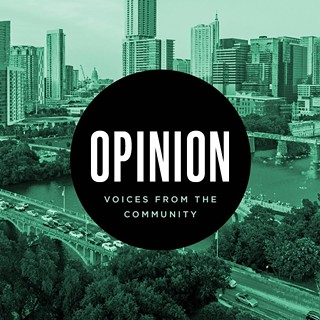Opinion: More Transit and Housing Options in More Locations Are Critical for Austin’s Future
The executive director of Transit Forward on the positive environmental impacts of greater density
By Bill McCamley, Fri., Sept. 20, 2024
Austin set a 2021 goal of reducing greenhouse gas emissions to net zero by 2040. Urban sprawl has caused a dramatic increase in driving habits and overall road miles, and has increased the amount of greenhouse gas emissions we generate. As increased road miles and energy use contribute to this problem, Project Connect and Austin’s new housing rules allowing for greater density are critical to meet this 2021 goal.
Research shows that a ride on a bus or train emits 55% less greenhouse gases than driving or ridesharing alone. When residents live nearer each other, it is easier to meet travel needs through transit services, reducing the need to drive. This makes a) Project Connect’s new train and bus routes, and b) the city’s recent changes to minimum lot sizes, compatibility requirements, and transit oriented developments critical components for a more sustainable environmental future.
These structural changes make a better future possible. But, it is our individual decisions to embrace more buses, trains, housing, and jobs all near one another that will change our reality.
This summer has been “mild,” but temperatures are rising. In the 1970s, 19 days of 95+ degree temps per year was common. Now that number is 88 days – a 361% increase. Climate change also leads to more drought. Last year was bad, and even after recent heavy (and more frequent, historically speaking) rain, we’re still in Stage 2 water restrictions and Lake Travis is at some of its lowest levels since the 1940s.
The environmental benefits of denser, transit-oriented communities don’t stop at climate change. Our area continues to be one of the fastest-growing regions in the country. Last year, though, the city of Austin population actually shrank a little, as more people moved into surrounding communities (Bastrop, Pflugerville, Kyle, Dripping Springs, etc.), resulting in increased urban sprawl.
Urban sprawl destroys critical wildlife habitats, leaving native animals with fewer safe places to live. And Austin was just ranked fifth highest for wildfire risk nationally. Remember the devastating 2011 Bastrop fire that destroyed 1,700 buildings? Scientists show that the more the “wildland-urban interface” is contained, the easier it is to defend homes, businesses, and their occupants against those threats.
The issue of “impervious cover” comes up frequently in conversations about Austin’s development. Meaning, the more pavement and buildings there are, the less opportunity water has to seep into the aquifers that feed our community’s springs and water supply.
Growth in surrounding areas impacts water quality and availability throughout the region, including in Austin. Take Barton Springs for example. Its catchment area (the area where rain flows into rivers, lakes, and springs) is big – over 100 square miles. Much of it is in Hays County, where more than 11,000 additional people moved between July 2022 and July 2023. So when Buda adds more houses, roads, and parking lots, water has a harder time making its way into the Edwards Aquifer, which feeds Barton Springs. It’s a perfect case that shows when the Austin area continues to grow out rather than up, our springs’ future becomes less safe.
Many Austinites who care about the environment have signs in their yards saying “Science Is Real.” Science, and national groups like the Sierra Club, point directly to a future where denser housing serviced by more trains and buses is environmentally responsible. So let’s continue working together, building a better environmental future for our great city with Project Connect and more housing options.
Bill McCamley is the executive director of Transit Forward, an Austin 501(c)(3) that works to educate and engage Central Texans about public transit.
Got something to say? The Chronicle welcomes opinion pieces on any topic from the community. Submit yours now at austinchronicle.com/opinion.









